We had been curious, but reluctant to travel to any Venezuelan islands due to repeated incidents of piracy that included bodily harm that in some cases resulted in death. However, various cruisers in Curacao and Bonaire painted a much safer, friendlier picture of the two small rarely visited Venezuelan island groups situated due east of Bonaire. A review of our boat insurance policy indicated that we could NOT cruise the
mainland of Venezuela, so we figured the out islands were fair game and made plans to head east to Islas de Las Aves.
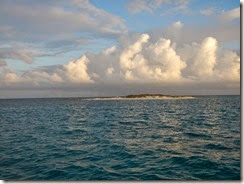 |
| Sandy "bumps" in the road |
We set sail early one morning in tandem with a lovely Puerto Rican cruising couple who had been to Islas de Las Aves many times. Their vessel, a catamaran called
CAMPECHANO, is aptly named as they said it translates loosely to “Nice Guy.” Captain Ronnie
is one of the nicest guys you’d want to meet. The fact that he also has extensive sailing experience and represented the USA in the Summer of ‘84 in Olympic Sailing left us fully expecting that
Exit Strategy would be eating
COMPECHANO’S dust, so to speak. Once underway, they rounded the southern tip of Bonaire well before us and by the time we cleared that point their cat seemed to have disappeared. We thought they may have dropped their sails to motor as the wind that day was ESE. Then we noticed a white sail way far north of us. We didn’t think that could be
CAMPECHANO because our intended course to Las Aves was pretty close to due east. We monitored VHS Channel 16 and finally were hailed by them a few hours later. It was then that we learned that Captain Ronnie doesn’t race anymore. Now he sails to FISH. It was his vessel that we spotted far to the north- a course he’d taken to follow the birds who would lead
CAMPECHANO to fish. And FISH they did! By radio, he reported that they had hooked and landed “a monster of a fish” and were now heading toward our set destination.
 |
| Not your usual fishing boat, is it? |
Islas de Las Aves are only scantly inhabited by mainly fisherman who live on one of the southernmost cays. The islands resemble small sand piles situated among the reefs. There are no trees, but the sand does support the usual grasses and beach vines. Las Aves is Spanish for
the birds. I think they should be named Las Aves de NOCHES because they only seemed to chirp (no- make that squawk) at night. These cays lie in two clusters designated as Sotovento (meaning
Leeward) and Barlovento (
Windward). We anchored at Lighthouse Island and went ashore to sightsee. It took only about 20 minutes to walk the entire circumference of this cay, but by the time we were nearly finished we encountered two uniformed men walking toward us. They explained in English (Thank God) that they, as Venezuelan Guardia Costa needed to board our boat to check us in. There are no Customs or Immigration Offices in Las Aves, so as a courtesy the coast guard takes down your information and then allows you to “rest and cruise”* the waters of Las Aves for three days before you should continue on to Islas de Los Roques where there are C and I offices. The Guardia Costa were young and quite polite, saying we could contact them by radio if we needed anything.
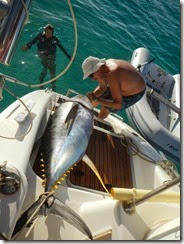 |
| Ronnie's wife Babbie is in the water while Robbie- his twin bro- cuts up the monster. |
COMPECHANO arrived a short while later and was greeted by the Guardia Costa like old friends. When the officers left, Ronnie called us over to get some fresh yellow fin tuna. It was a MONSTER of a fish and we took as much as we could fit in our freezer and fridge. (To date, we still have 2 mammoth-sized steaks left.) Then they treated us to a wonderful tuna dinner complete with a flan dessert made by Ronnie’s wife Babbie.
The following day the crew of
COMPECHANO lead a lobstering expedition to a nearby reef with good results. The men donned their scuba gear and I mainly helped as a spotter and a bagger for Dan.
![4977 (Medium)[1] 4977 (Medium)[1]](http://lh4.ggpht.com/-0umPGO0UVpQ/VJ3GBi9k8CI/AAAAAAAABc4/NYJUJEsFtKI/4977%252520%252528Medium%252529%25255B1%25255D_thumb.jpg?imgmax=800) |
| We found quite a few hiding under a huge stand of mustard-colored elkhorn coral. |
Early on our third day in Las Aves, we said a sad good-bye to our Puerto Rican friends who began their passage north to their home port of Salinas, PR. Then
Exit Strategy motored another seventeen nautical miless east and anchored behind a reef in Barlovento to “rest” another night before continuing on to Isla de Los Roques.
*By law all persons and vessels MUST clear Customs and Immigration upon entering/exiting a foreign country. However, it is accepted practice that a captain may stop to rest or make a repair without officially clearing in, although one cannot go ashore.



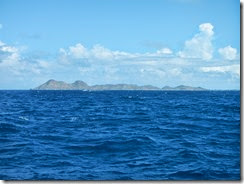
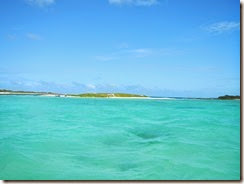
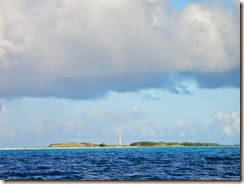
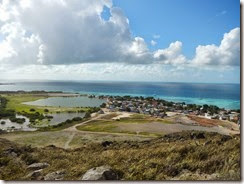
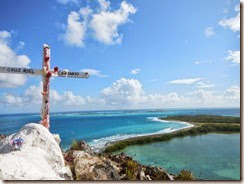
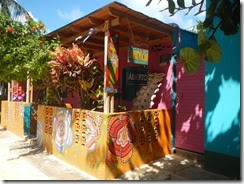
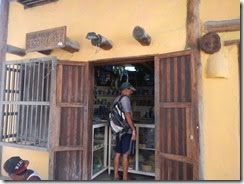
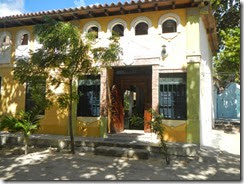
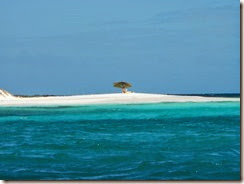
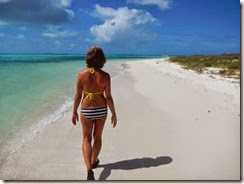
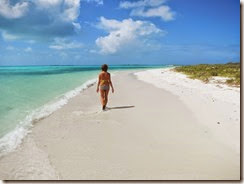
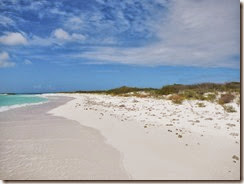



![4977 (Medium)[1] 4977 (Medium)[1]](http://lh4.ggpht.com/-0umPGO0UVpQ/VJ3GBi9k8CI/AAAAAAAABc4/NYJUJEsFtKI/4977%252520%252528Medium%252529%25255B1%25255D_thumb.jpg?imgmax=800)